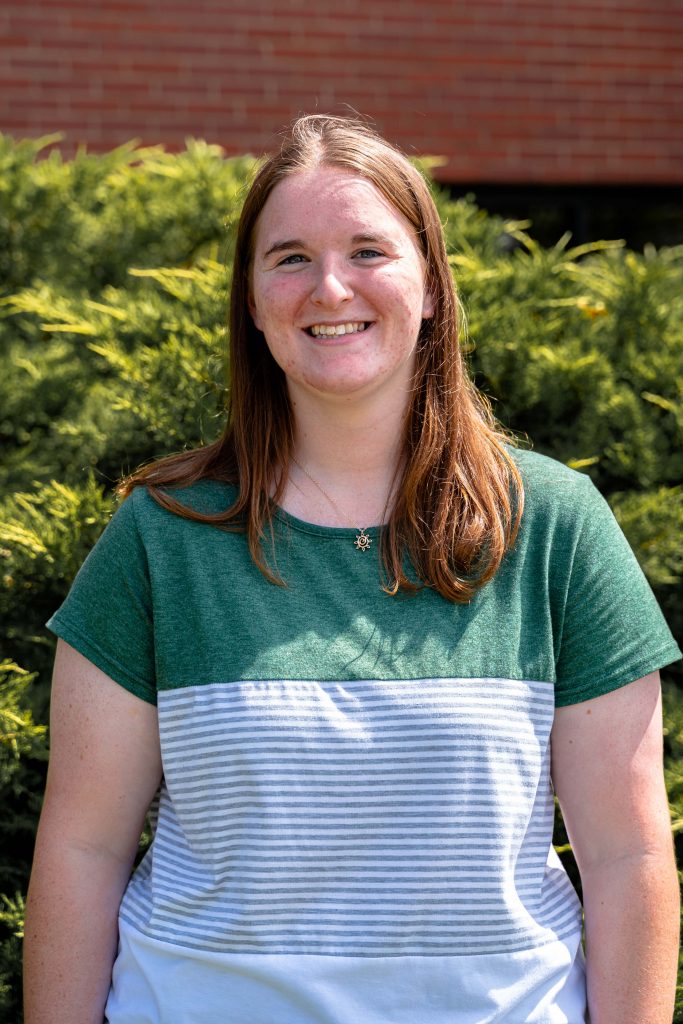Sarah’s Slice of Life: The Heart of Aesthetic

Two people and their dog linger outside of a white colonial house as twilight approaches. It’s a typical evening near the Cape Cod shore, and the dry, blowing grass signals late summer and the turn of autumn. The woman has a strong jaw and wears a deep green dress. She stares pointedly at the ground while the man with dark hair and brown trousers sits on the porch stoop. Each one seems oblivious of the other.
The dog, a collie with brown and white fur, stands alert in the uncut grass. The yellow ends of the grass cover all four of its legs as it listens to something, probably the call of a whip-poor-will or another evening sound. An unkempt grove of locust trees surrounds them. Each tree sways like a candle flame in the wind, and the crash of ocean waves sounds in the distance.
When artist Edward Hopper created this scene in his 1939 oil-on-canvas painting “Cape Cod Evening,” he probably wasn’t doing so specifically for me. Nevertheless, when I was a senior in high school, the painting became the catalyst for my love of art.
I’ve always had a love-hate relationship with art, namely because I’m terrible at it. Ever since I began to do crafts in Sunday school class, it became clear that my bag of talents did not include drawing or painting. If you give me a pen and ask me to draw a person, you’re going to get a stick figure that barely resembles a human being at all.
Hopper’s painting turned the tide of my relationship with art. I first discovered it during an exercise in my creative writing class. We had to choose a painting to write an ekphrastic poem — a poem that visually describes a work of art. I chose Hopper’s piece, and it consequently sparked my fascination for art and all the creativity that surrounds it.
Of course, it wasn’t the art itself that so fascinated me. It was the imagination behind it, the mind and soul in each brushstroke. Art is simply a vehicle for imagination, a road by which someone achieves the act of creation. We get to see the finished product, sure, but a contemplative mind and the human capacity for artistic form and beauty wait behind every painting, sculpture, poem and creative story.
Imagination is an ordinary thing that remains as intangible as wind and as slippery as mud. It fosters the senses of all art and creativity, but it remains mysterious, dwelling somewhere between the subconscious mind and the original wilderness of the human heart. Understanding it often seems as improbable as carrying water in a sieve.
Even with all the ambiguity attached to it, imagination remains uniquely human. It gives us the chance to create and to wonder. It allows us to examine things creatively and systematically.
However, I think one of the most important functions of imagination is to give shape to what the Portuguese language calls “saudade” — the vague, constant longing for something or someone beyond the horizon of reality. It’s made manifest through things like nostalgia, music and yes, art.
Ultimately, what underlines imagination will determine how we give this “saudade” shape, influencing how we create art, express our desires and even see the surrounding world. If we have the sacramental sense of vision that accompanies the Christian faith, then we understand this longing stems from a desire to see the ordinary world mediate God’s presence.
Imagination — and the art produced by it — shows us glimpses of heaven in earthly landscapes. This vision gives meaning to the longings behind the “saudade” feeling, behind every burst of emotion that often springs up when looking at a beautiful hillside or a piece of art.
Writer and philosopher Calvin Seerveld determined that the heart of the aesthetic is allusion. The “thing” itself is not the work of art, the memory or the feeling. It is only an allusion, a glimpse, a shadow that points to the real thing — God’s ultimate reality. Art speaks, but only if we’re willing to listen.
In this sense, we’re a little bit like the dog in Hopper’s painting. We stand alert in the grass, gazing toward the horizon beyond the shadows of the trees. All the while, we’re listening to something behind the crash of the waves, something we cannot see but know is real.
Tate is the Editor-in-Chief for the Liberty Champion. Follow her on Twitter

